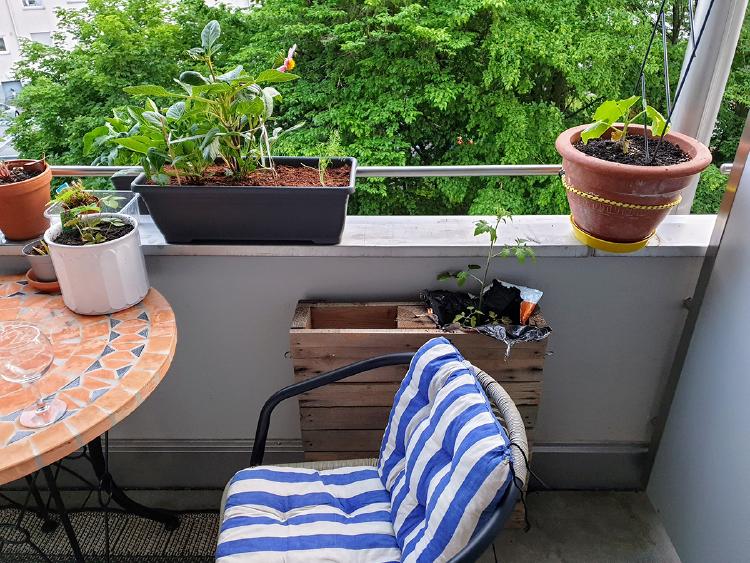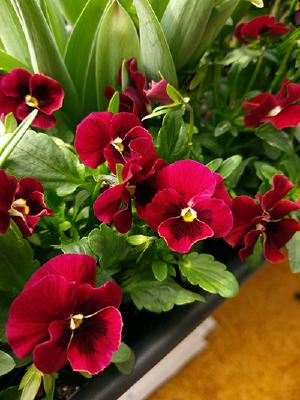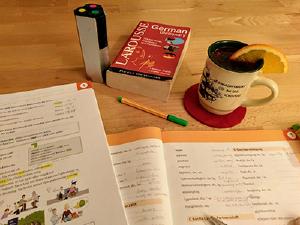Gardener's Fall
First video created! Wishing all the gardeners’ out there a wonderful season as they prepare for spring. Enjoy!
- Filed to:
- video
- kleingarten
First video created! Wishing all the gardeners’ out there a wonderful season as they prepare for spring. Enjoy!
Hi Everyone!
My latest article is an overview of how to sow seeds. So if you’re like me and are a little intimidated by seeds, then this is the read for you. In it, you’ll learn the basics of what seeds need in order to survive. Happy planting!
This is the craziest time of the year for gardeners. Everything is growing so fast that we can’t keep up. For a while I managed to keep on top of everything but now I’m falling behind, in both the Kleingarten and my Balkongarten. The most pressing jobs in the Kleingarten, such as the grapevine roof trellis and winter rye cutting, are completed on time, but the balcony has taken a back seat. This past weekend I committed myself to the balcony, which is finally taking shape, although there’s still a lot that needs to be done.

Some of the chaos on the balcony
My main task was to get plants into their final pots. Two tomato plants, dahlias, wallflowers, a cucumber, and pepper seedlings were all desperate for transplanting. All but one tomato plant made it into new pots. Unfortunately, it has to wait until I can get more soil, which adds to the delays.

One tomato plant planted in the pallet container
Between the two tomato plants, I planted the worse-looking one. I was afraid that if I didn’t I would lose it. But on this seed-to-plant journey I’ve noticed a difference in stress and plant growth based on what type of pot they were grown in. The weaker tomato plant was in a peat pot and significantly shorter than the other in a plastic pot. The plastic pot tomato is taller, has dark green leaves and, even more surprising, has not one but two plants inside. Having multiple plants in a pot like this normally stunts their growth. I find it very interesting that the two tomatoes are doing better than the one alone in a peat pot the same size. This also conflicts with my desire to reduce plastic in the garden.
Both plants were doing equally well up to a certain point— the point when they needed to be planted out two weeks ago. It appears that biodegradable pots are great but you need to keep on top of schedule and plant out the plants the moment they are ready. Plastic pots may allow for a flexible time frame, keeping the plants happy awhile longer until you’re able to transplant them out.
At the moment, the plastic pot tomatoes are just now showing signs that they are desperate to get into their final place. Their lower leaves turning lime green/yellow, and they are beginning to produce flowers even though they are not yet at their mature height: since they are annuals, their goal is to grow, reproduce, and then die. These particular plants assume they need to reproduce sooner because of the poor conditions. From their viewpoint, producing a few fruits is better than producing none. So my plan of growing two meter tall plants, for both some shade on the balcony and a bountiful harvest, may be lost if they don’t get planted soon.
Keeping to the theme of biodegradable pots, I have mixed feelings about the newspaper pots I used to start seedlings. They are great but, again, only if you keep on top of the plant care, otherwise they turn into a nightmare. The pots dry out faster so they require constant attention to the moisture levels. They also dry out unevenly, with pots on the outside drying faster than those in the middle. And once the true leaves appear twice the size as the seed leaves, they require immediate potting on into a nutrient-rich soil.

Newspaper pots in April
I still need to do a few more tests, but my current advice for biodegradable pots is to stick to the plant’s schedule, not yours. As soon as you see these signals, you have to act quickly no matter how busy your life is, otherwise they’ll end up stunted or die. Pay attention to what your plants are telling you and they will reward you in kind.

Steigstraße
Living in Germany has its difficulties, particularly as a non-native speaker. In an ideal world I would be able to find everything I need to apply what I preach, but that can be challenging. The most obvious hurdle is language. I don’t know all the German terminology associated with gardening; it’s learn-as-you-go. This can be annoying since I don’t even possess the common knowledge of where to find certain products like I do in the States, not to mention not knowing the names of the products.
For example, where can one find speciality spring bulbs? In the US, I can instantly name a few familiar nurseries (Brent & Becky’s, Burpee, Spring Hill, Gurney’s, etc) and then rank them in speciality, quality, and expense to decide which nursery to order from.
Now, tell me, where I can buy spring bulbs in Germany?

Tiefmutterchen
Let’s walk through the process.
The literal translation for spring bulb is Fruehlingszwiebel but Zwiebel also means onion. Search ‘Fruehlingszwiebel’ brings up sites selling green onion bulbs.
Let’s use a specific spring bulb in order to refine the search: Tulip. What’s the German name? Head to a translation site, find “Tulpe”, search, and the first result is a company named Albrecht Hoch.de. It looks like a nice spring bulb site, with no mention of the word “spring bulb”.
Next result, Samen Mauser.ch, a Swiss site. I can’t easily order from there since it’s out of the country and uses a different currency, but it lists Blumenzwiebel. Of course! Flowering bulb! Why didn’t I think of that? Type in ‘Blumenzwiebel’, search, and finally multiple results.
Now, it’s time to sort through and rank which nurseries are best to order from. Start the next research process. Most of the time it’s fun to research and learn the German name of a plant. A favorite of mine is Stiefmuetterchen which translates ‘little step mother’ for pansies Viola tricolor hortensis and Fingerhut, ‘finger hat’ foxglove Digitalis purpurea.

It's a process
But it’s also a pain when I want to quickly look something up, or if I’m in a store trying to decipher a label. Not only do I need to learn the new word, I have to retain it, something that does not come easily to me.

A huge hurdle when learning German is memorizing words. I’m terrible! And yet, I love learning the language. I’m not entirely sure why: it’s not the prettiest to listen to, although I’d argue that it’s not as ugly as most make it out to be. Many examples Americans hear are in anger, which emphasizes the harshness of the language, but in everyday speech it’s pleasant. The grammar is difficult, to put it mildly. It’s frustrating when you don’t understand a rule but so satisfying once you finally do and can move on to the next frustrating one. It’s definitely a love-hate relationship.
The owner of the garden constantly has to repeat the German names of the plants in the garden. I’ve started to think that I should start labeling them with hanging tags in order to memorize everything. Can you imagine seeing large brightly colored tags with bold names hanging off of everything in a garden?
However, I am also attempting to memorize latin names too since it’s the international identification language. This might not be a bad idea. I think that this weekend I might just become that crazy American who labels everything.
Hi Everyone!
If you haven’t done so, check out my Articles section for Starting Your Seed Calendar. It’ll teach you how to create an outline of when to sow seeds so you don’t miss crucial planting windows in your specific climate. It’s a great way to stay organized and keep records for present and future growing seasons. Be sure to post your photo on twitter with #seedcalendar and @hereisthedill!
